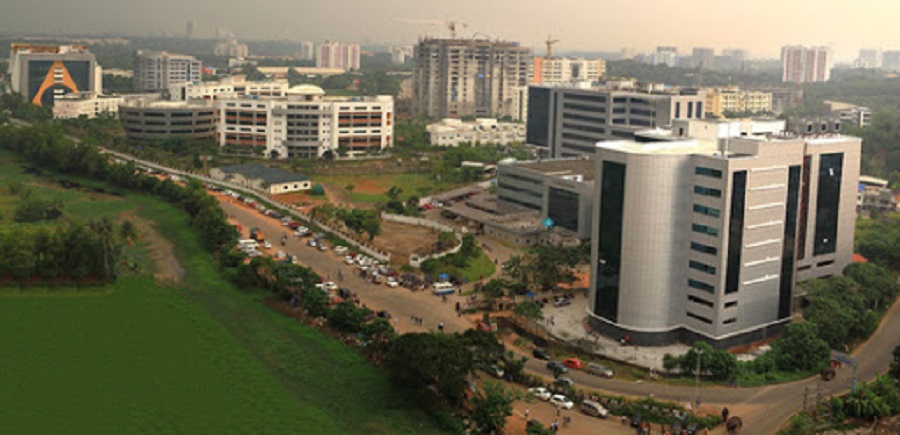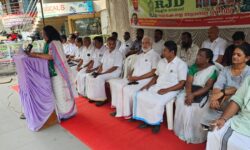KOCHI:
Aadira Srinivasan cups her hands and fondly feels the wet clay gain the shape of a small bowl inside her palms. Till a week ago, the young woman was working with a top audit firm in upcountry Delhi, the city where she grew up.
“It’s a far refreshing world here,” says the 20 something volunteer at the Kochi-Muziris Biennale (KMB), participating in a workshop on pottery that began on Friday at a leafy locale. It’s the opening session the three-day ‘Kaliman Kalari’ at the ‘art room’ of the Cabral Yard, a key venue of the ongoing contemporary art festival.
Aadira’s guru at the workshop is keen she gets the desired kind of pot: wide base, narrow neck, open mouth. “Fine,” replies the master potter Jayan V K, his considerate voice muting the low sound of a motor that rotates the potter’s wheel at the ideal speed. “Hold the clay close, but not forcefully that it gets crumpled.”
But the workshop is not just about mud vessels. “We are teaching the participants how to make sculptures as well. Shapes of various things, living and non-living, around the world,” says middle-aged Jayan, who lives near Tripunithura in suburban Kochi, leading a December 21-23 pottery workshop at the Biennale over the weekend. A trained sculptor, his artworks are known for traditional charm while being open to contemporary styles.
Aadira is happy to sense some degree of success at her first round of involvement in the workshop being organised by the Kochi Biennale Foundation as part of its programme called ABC (Art By Children). “We aim to groom talents while also promoting their social interaction and sense of camaraderie,” says renowned artist Bose Krishnamachari, president of the 2010-founded Foundation.
Blaise Joseph, who heads the ABC, believes the pottery workshop will open a new world to the Biennale visitors, given that clay is a medium less used by urban people. “Clay is a fundamental material, and pot-making is a human activity dating back to prehistory,” he points out. “Over the three days here, we will get several vessels of varied shapes and sizes. We plan to assort them, fire the entire stuff over two days next month and eventually make a single terracotta artwork as a souvenir.”
Jayan the master hails from a potter’s family but learned the art not just in the traditional way. Having done courses from reputed institutes in Karnataka’s Belgaum and later Thiruvananthapuram, he runs a sculpting institution called Terra Crafts set up in his village of Eroor in Ernakulam district 28 years ago.
“Well, my ancestors belong to Tamil land. From the Cauvery belt, somewhere near Kumbakonam. Ten generations ago, we migrated to Kerala,” he adds. “Clay, as an art medium, is largely being looked down upon. Many call it ‘mud’ and find it good to make nothing more than just pots. Of late, though, there is some betterment in the status.”
At the Beinnale ‘art room’, Jacqueline Johnson, a UAE-residing Malayali into her 50s, is trying to shape a pot with the clay. The material has come from Bangalore, while she has reached the Biennale from Dubai. “This is experiential,” says Jacqueline, a native of Kavanad in down-state Kollam from where she arrived Kochi early Thursday.
As more visitors trickle into the art room, the walls of the rectangular space show a whole lot of objects made from coconut leaves at an earlier workshop this week.
The fourth edition of the 108-day Biennale, curated by eminent artist Anita Dube and on from December 12, has 94 artist projects being exhibited in the city’s ten venues.




